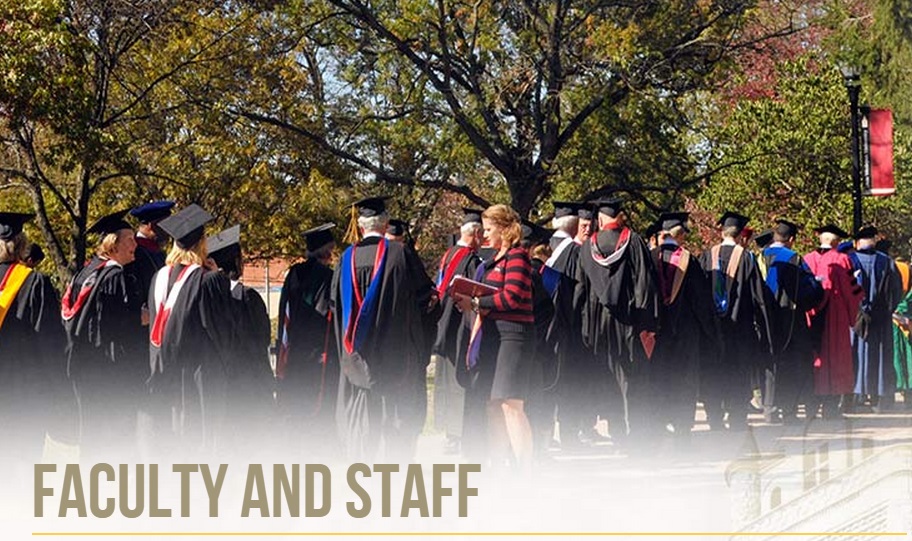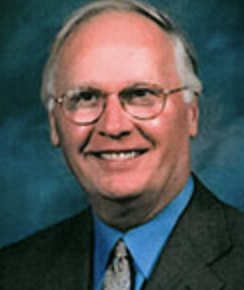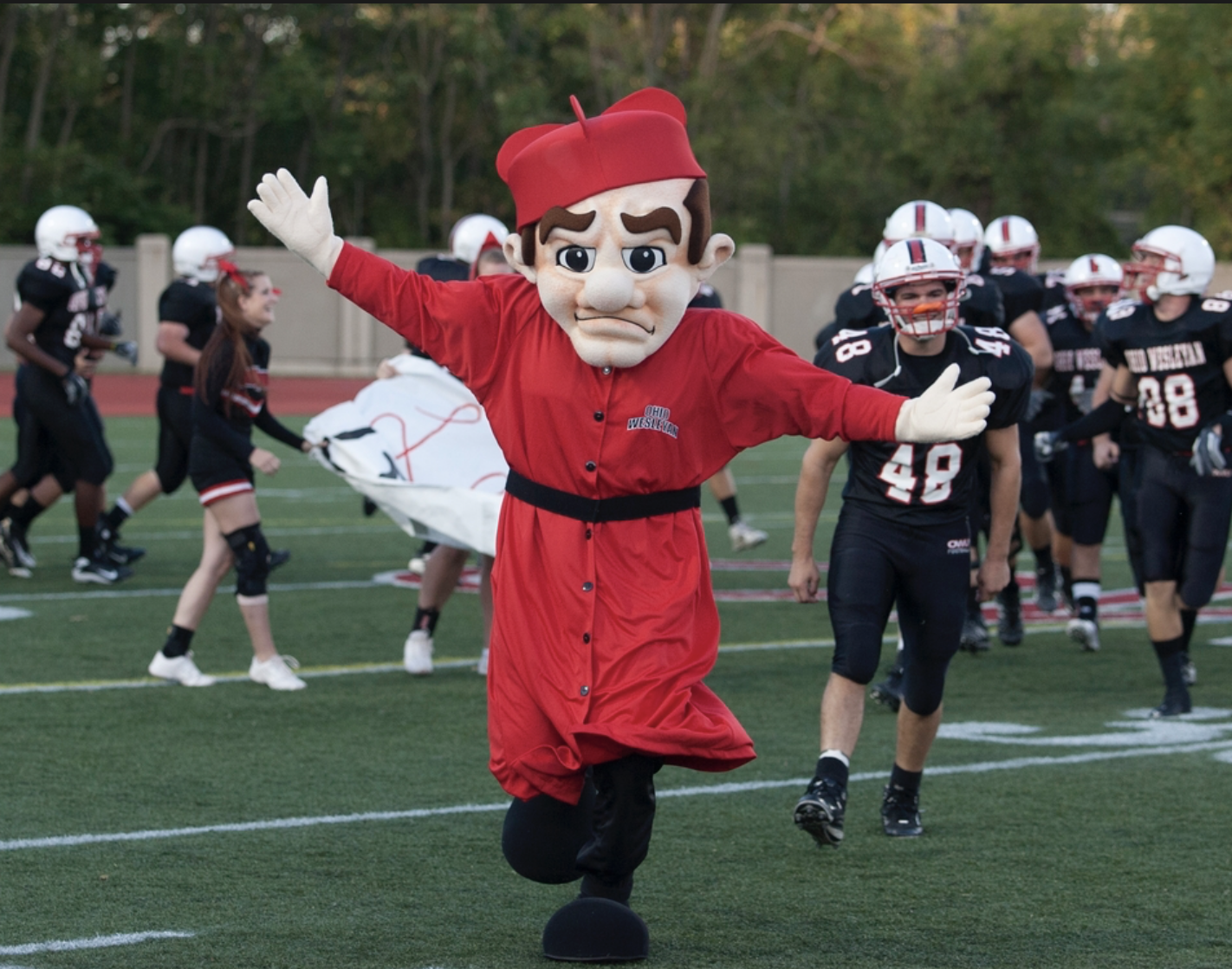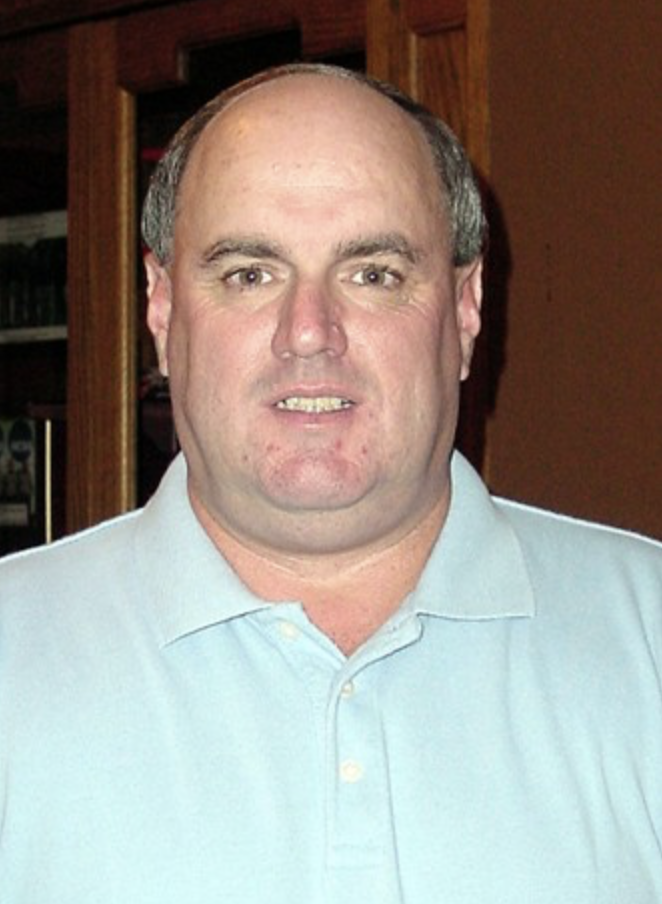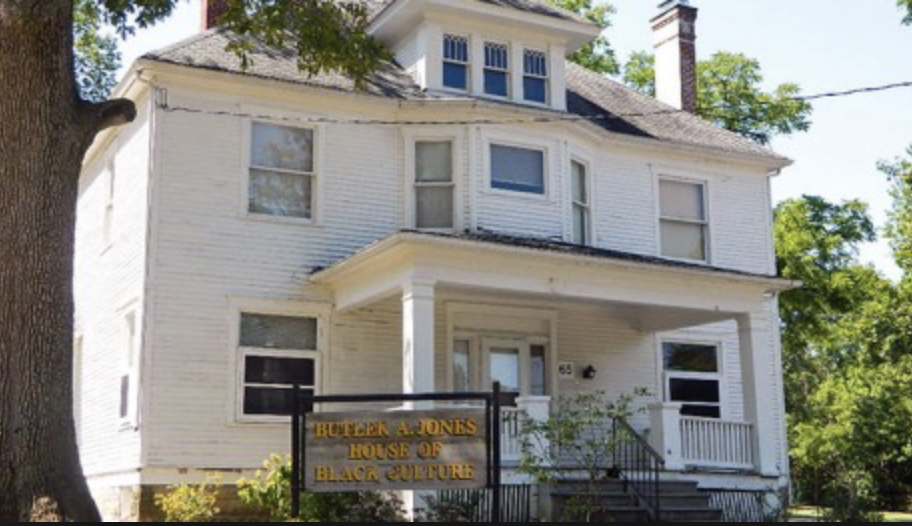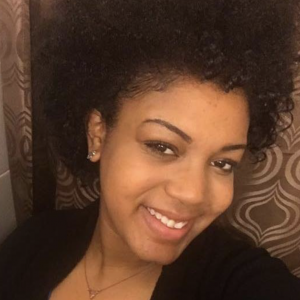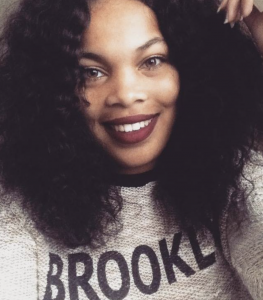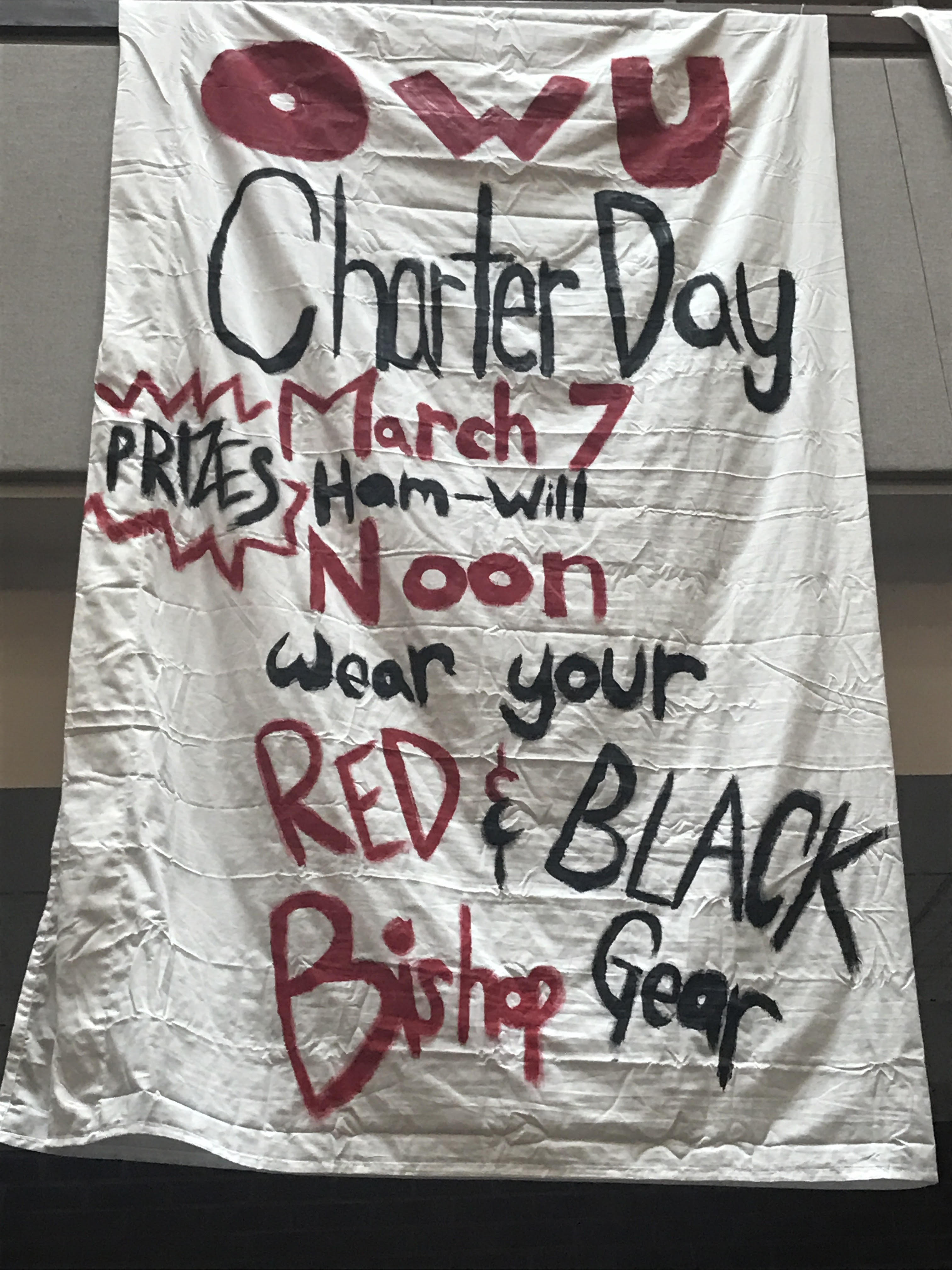By Gopika Nair, Editor-in-Chief
As a college freshman, Marty Kalb planned to go into the hotel business. “I never thought I would be an artist,” he says.
But today the Ohio Wesleyan University emeritus professor of fine arts sits on a bench in the Richard M. Ross Art Museum, surrounded by pieces of his artwork, ranging from realistic depictions of tides surging ashore to abstract landscapes bustling with color.
More paintings hang in other sections of the museum, and Kalb notes the distinctions between them—some are done on paper, others on canvas. From structured geometric pieces to monochromatic images capturing the horrors of the Holocaust, the paintings featured in the museum for the “Marty Kalb Retrospective” are a fraction of the work he has done in his lifetime.
Kalb worked in hotels during high school and enrolled as a hotel management major in college. But after realizing the career was limiting in terms of lifestyle and intellectual involvement, he dropped out of the program after two weeks.
“I made up a major,” the Delaware resident says. “It was called agricultural psychology, and I said my minor was bovine counseling, and there was no such thing.”
Kalb spent the next three and a half years completing basic graduation requirements and taking courses that piqued his interest. But after being told he couldn’t graduate without a preference in a particular subject, Kalb decided he liked art and took courses to complete an art education major.
He graduated with a Bachelor of Arts degree from Michigan State University and, under the guidance of his mentor Charles Pollock (brother of Jackson Pollock), decided to pursue a graduate degree in art.
Yale University offered him an invitation to study graphic design and, after getting a degree, Kalb attended University of Berkeley, California.
“That was very nice in the sense that it exposed me to a totally different environment than the East Coast or the Midwest and, at that point, figure painting was very well thought of in California,” Kalb says. “It was also a time that was extremely exciting politically [with the] free speech movement and Vietnam protest movements. … My life then was very much involved in making artwork.”
At the time, Kalb’s art featured political imagery influenced by Francisco Goya, the Spanish painter who created a series of images dealing with war called “The Disasters of War.”
Following graduate school, Kalb taught at University of Kentucky for a year before coming to Ohio Wesleyan, where he taught for 40 years.
“I was not a product of a liberal arts education,” Kalb says. “I went to large universities and, when I came here, I came from a much larger university. … I didn’t think I would really feel comfortable in a small setting like this, but it turned out to be the absolute best choice in my life as far as professional work as a teacher goes.”
During his tenure, Kalb posted a sign on the wall behind his desk so that when students talked to him, they read: “I like you, now let’s talk about your work.”
“The point of that sign was to say to that student, ‘I care about you as a person, and I want to share my feelings with you about what you do, and what you do doesn’t necessarily have any effect on who you are in my view,’” Kalb says.
Discussing the evolution of his own artwork, Kalb says he has continued to incorporate the same concepts—the movement of visual elements accompanied by a stable entity such as “the contrast between organic and geometric or a flow that seems accidental and then a deliberate placement of an element that is clearly something that is contemplative.”
With the 50-year retrospective exhibition, Kalb says his goal is to show the range of art he has been interested in creating. Plans for the exhibition started around three years ago, and the pieces displayed were selected jointly by Kalb and Tammy Perakis Wallace ’02, assistant director of the Ross Art Museum.
Each section of the museum features different artworks from figurative art, to landscapes and seascapes, to the Holocaust Series.
“When you walk in and experience all of this, you get a pretty good representation of what I’ve been about,” Kalb says. “Is it the best representation of that work? I don’t know. I suppose I’d have to do five or six of these things to figure out which one is the best. But it does have work I’m proud of.”
Many of Kalb’s paintings are from locations he’s photographed while traveling in the United States, Caribbean, China, Japan, and South America. His next planned trip is to Scotland and, though his work hasn’t used references to that country yet, he notes that the ocean plays a significant role in the culture of island countries.
“I think the things that are interesting to me most now are the seas and oceans and the way waves move with the effect of wind and crashing on rocks,” he says. “So wherever I go, I take photographs of things that relate to that.”
Though Kalb says he has been fortunate to travel broadly and see artwork from different cultures, traveling to faraway lands isn’t the only way to find inspiration. Kalb has a group of paintings based on walking by the Delaware Run and another piece inspired by what he saw within half a mile of his house.
“It’s a question of opening your eyes and asking yourself, ‘How beautiful is that?’” he says.
The “Marty Kalb Retrospective” will be on display from Aug. 18 to Oct. 8 at OWU’s Richard M. Ross Art Museum, 60 S. Sandusky St.




